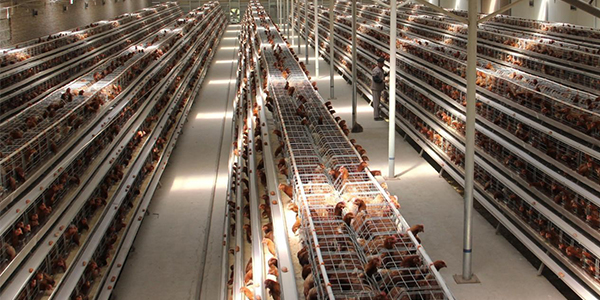The energy and protein needed to raise chickens
Jul 12, 2019
In the process of raising a chicken, the chicken body must have enough nutrition, so that all the tissues and organs of the chicken can be balanced development, and these nutrients are transformed from the feed, the energy and protein needed by the chicken is very important.
(1) energy needs. All physiological processes of chicken, such as movement, excretion and reproduction, cannot be separated from energy. The energy comes from carbohydrates, fats and proteins in the diet. In nutrition, we divide energy into total energy (GE), digestive energy (DE) and metabolic energy (ME). Metabolic energy (ME) is expressed in the nutrition and feed combination of chicken, which refers to the energy converted in the chicken body, and its unit is kilojoule /kg (kJ/kg), or megajoule /kg (MJ/kg), which represents the energy contained in each kilogram of compound feed or raw material. Energy feeds include grains and rootstock feeds, which are rich in starch and sugar. Commonly used are corn, barley, wheat, rice and so on. Among them, corn was the largest, with a metabolic energy of about 14.07 megajoules per kilogram

(2) protein requirements. Protein is the main component of chicken and eggs, the products that make up the chicken body and chicken. Protein is composed of more than 20 kinds of amino acids, protein into the human chicken body after digestion, by various enzymes into amino acids before being absorbed. Amino acids can be divided into essential amino acids, which can only be obtained from feed, and non-essential amino acids, which can be synthesized in chickens or converted from other amino acids. Among the essential amino acids, the lack of some amino acids will affect the absorption and utilization of other amino acids, thus affecting the growth and production performance of chickens. These amino acids are called restrictive amino acids.
Lysine, methionine and tryptophan are the main restricted amino acids of chicken, especially lysine and methionine are easy to be deficient in feed. Therefore, it is important to pay attention to the supplementation of these two amino acids in the feed. In practice, due to the limited content of these two amino acids in the feed, such as the high content of Peruvian fish meal, only 8.7% and 2.9% of the protein. Generally, it is better to add a small amount of synthetic amino acids to feed production and the cost is lower. Protein feed can be divided into animal protein feed, such as fish meal, meat meal, feather meal, silkworm pupa and blood meal; Plant protein feeds, such as beans, soybean meal, rapeseed meal (cake) and peanut cake, etc., in which soybean meal contains higher lysine and crude protein, about 2.9% and 44% respectively, with the highest dosage, generally accounting for 15%-25% of the feed.
Pre:The breeding coordination of chickens in a chicken cage
Next:What should raise chicken feed to mix medicine to notice

